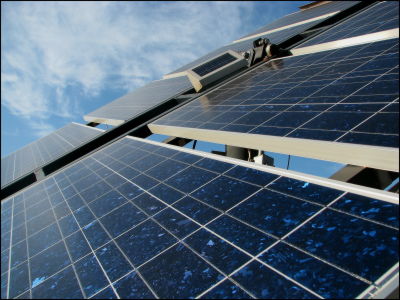What Happens When You Cover The Whole Sahara Desert With Solar Panels?

Renewable energies such as solar and wind power are receiving increasing attention to reduce carbon dioxide emissions and curb climate change.
What If We Covered the Sahara With Solar Panels? --YouTube
The Sahara Desert is the largest desert in the world, as large as China, and features high temperatures and long daylight hours.

Below is a distribution map of the hours of sunshine throughout the globe. There are areas with long daylight hours in North America, Southern America, and southern Africa, but you can see that the area around the Sahara Desert has long daylight hours over a wide area.

The areas with the longest daylight hours in the Sahara Desert are exposed to more than 4000 hours of sunlight each year.

In addition, there is almost no rain in the Sahara Desert, and clear days with no clouds continue.

For these reasons, the Sahara Desert is a good place to build a solar paneled solar power plant.

An example of a large solar power plant is a solar power plant located in

This solar power plant is

When building a solar power plant in the Sahara Desert, it is possible to generate enough electricity to supply electricity to the whole of Germany by laying solar panels in a very small area.

If we expand the range of solar panels, we can supply electricity to the whole of Europe ...

If you spread the solar panels in the area of the red frame on the left end of the figure below, you can supply power to the world.

The area required to power the world is about the same as in New Mexico.

According to RealLifeLore, there are 25 million people living in the Sahara Desert, but the low population density does not pose a major problem when building a solar power plant.

In fact, a European company has set up

RealLife Lore cites 'difficulty in transportation' as the reason why it is difficult to build a solar power plant in the Sahara Desert. The figure below shows the main roads in the Sahara Desert, but you can see that only part of the vast Sahara Desert has roads.

When constructing a solar power plant, it is necessary to bring a large amount of solar panels and many related materials to the planned construction site, but it is difficult to transport goods in the Sahara Desert where roads are not maintained.

In addition, 51.4 billion solar panels are required to supply electricity to the world, and the cost is 51 trillion dollars (about 5600 trillion yen).

If transportation and cost issues can be resolved and solar panels are successfully spread throughout the Sahara Desert, 1.3 million terawatts of electricity can be supplied annually.

Since the total energy consumed by humankind in 2019 is 173,000 terawatts, it is calculated that if solar panels are spread throughout the Sahara Desert, it will be possible to produce seven times as much energy as the total energy consumed by humankind.

However, if such a large-scale solar power plant is constructed, the temperature difference between the surface and the air will become large and an updraft will occur.

The generated updraft develops clouds and brings rain to the Sahara Desert.

RealLife Lore then points out that the entire Sahara Desert could be greened.

The word 'greening' sounds like a good thing, but it's not. The sand that soars from the Sahara Desert reaches all over the world, including Europe and South America, and affects the ecosystem ...

Greening the Sahara Desert reduces the amount of sand that soars, threatening to change ecosystems around the world.

However, RealLife Lore says that greening the Sahara Desert can be considered if the entire Sahara Desert is covered with solar panels, and it is realistic enough to spread the solar panels in the same area as New Mexico.

Related Posts:
in Video, Posted by log1o_hf







